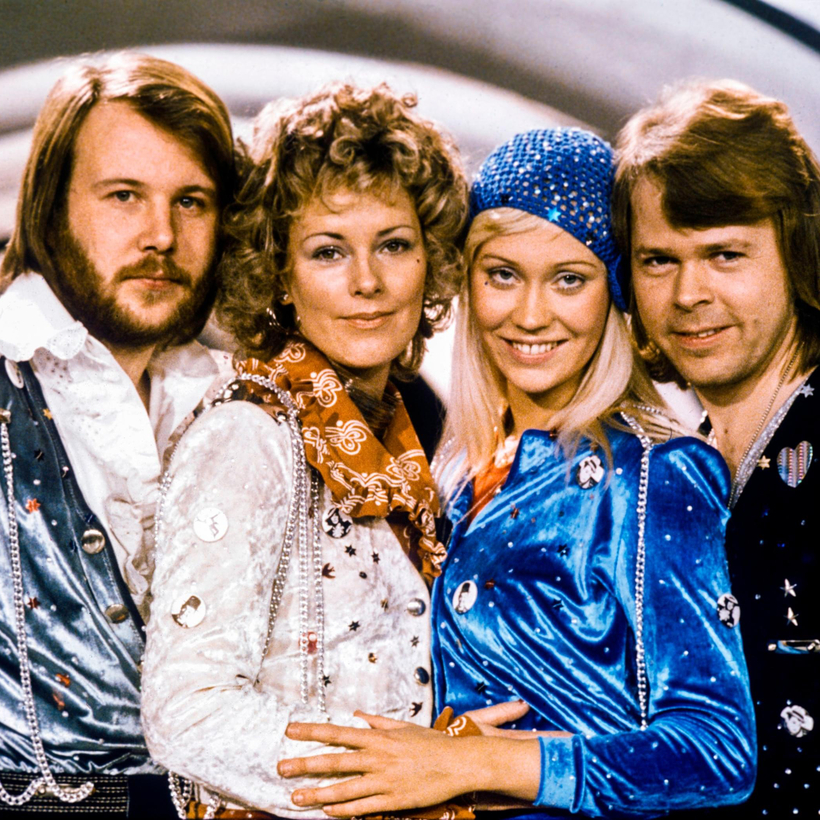This summer marks the jubilee of Abba’s eponymous 1975 album. It’s the album that proved the band was not just the one-hit wonder of the Swedish Eurovision winner “Waterloo,” and the songs on it, including “SOS” and “Mamma Mia” (also the name of the musical that returns to Broadway on August 2), made Abba one of the biggest groups in pop history.
The cover, with the four members sipping champagne in a Rolls-Royce, could be seen as a subtle “fuck you” to the band’s critics in Sweden at the time. The country was run by a social-democratic government for nearly half a century, from 1932 to 1976, and its left-wing musical manifestation, commonly known as “Svenska musikrörelsen,” had a big influence over newspapers, TV, and radio. (Commercial TV and radio was forbidden in Sweden until the late 80s.)
Abba and their manager, Stig Anderson, were cast as the main enemies of this movement, symbols of commercial music and culture. Even though Abba was the first Swedish group to succeed abroad, Abba-bashing was constant in the band members’ homeland, and they knew that the Rolls-Royce and the champagne would add fuel to that fire.
Yet it’s interesting that a group accused in their home country of glorifying capitalism ended up becoming the most popular group in several Socialist nations. Sweden’s position as a neutral country, located between West and East, actually helped to make it possible for Eastern regimes to accept Abba.

The Cold War was raging at the time, and American and English pop artists rarely, if ever, visited countries behind the Iron Curtain. That’s why Abba’s trip to Poland, in 1976, drew so much attention. That year, the group participated in a live TV broadcast watched by most of the country—and it is still shown on Polish TV every New Year’s Eve.
Ahead of the TV special, Abba even made a special Polish music video for “SOS.” In the video, cut under a time crunch, Agnetha Fältskog stands alone on Plac Trzech Krzyzy (Three Crosses Square, in central Warsaw), lip-synching. The scene is interspersed with footage of Frida (Anni-Frid Lyngstad), Björn Ulvaeus, and Benny Andersson on the plane to Poland, singing along. (Agnetha and Björn, who had young children at home, did not want to travel on the same plane for safety reasons, so Agnetha flew to Warsaw a day ahead of the others.)
Abba’s visit led the Polish Communist regime to spend the entire 1976 budget for Western pop music on pressing one single album: 800,000 copies of the follow-up to Abba, called Arrival.
Even the U.S.S.R., which would never have accepted any American artist, approved Abba and pressed records on license, though the Soviet regime’s attitude to Abba later shifted when the band spoke out in support of the Solidarity trade union in Poland and the nascent democratic movement there, which threatened the stability of the entire Eastern Bloc. Still, it’s striking that a high percentage of visitors to the Abba museum, in Stockholm, which opened in 2013, come from the formerly Communist nations of Eastern Europe.
The specially built Abba Arena, in London, celebrated its third anniversary last month. Seven times a week, digital “Abbatars,” made by the George Lucas–founded company Industrial Light & Magic, perform live concerts (yes, with a live band) for an ecstatic crowd who know the words to “SOS,” “Mamma Mia,” and all the other classics by heart.
The band members are now in their 70s and 80s, but Abba will survive everyone.
Jan Gradvall is Sweden’s top music journalist and the author of several books

